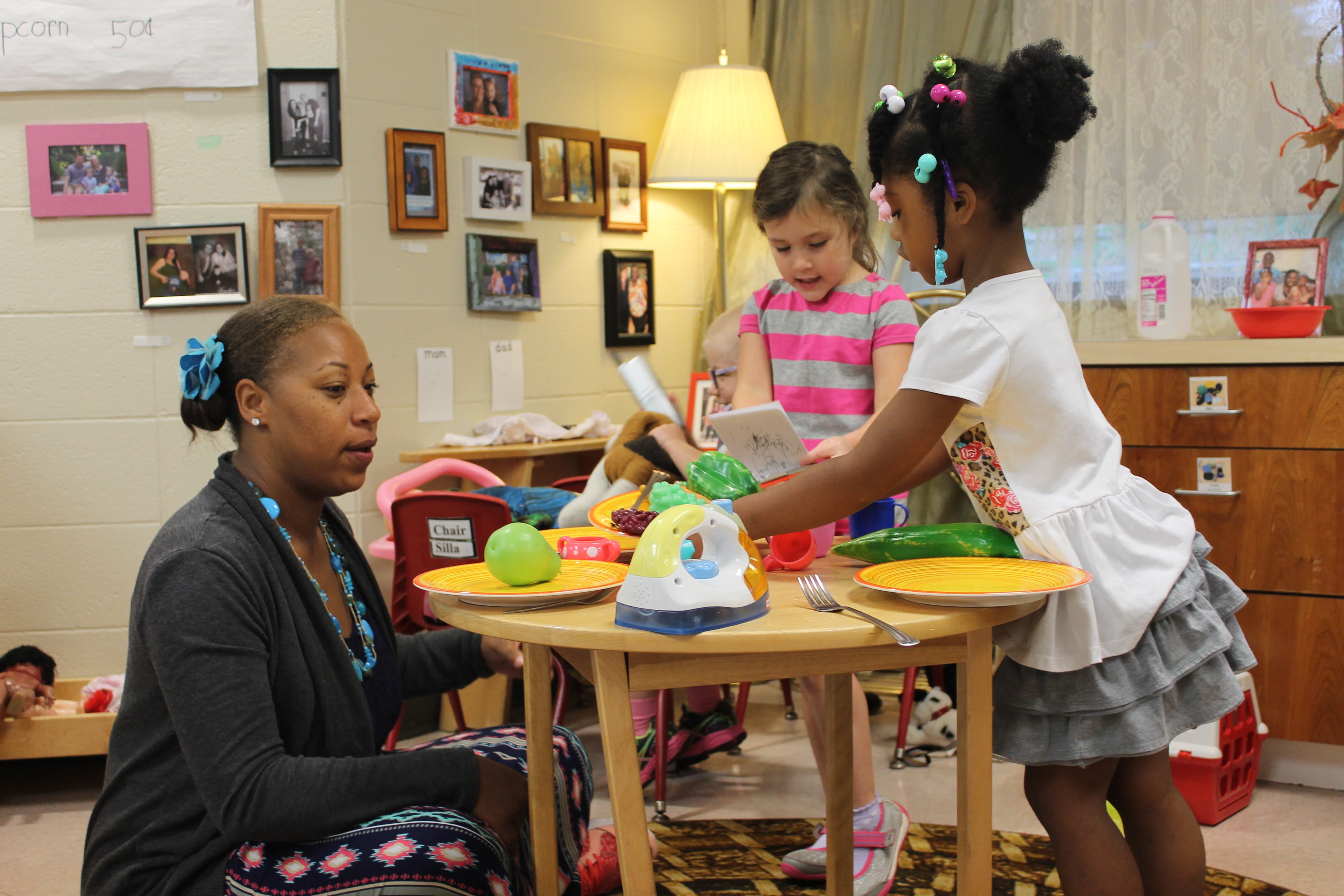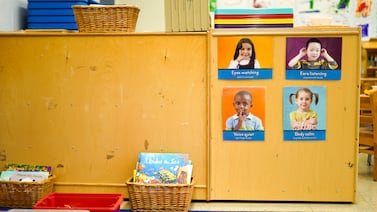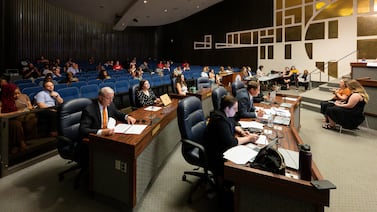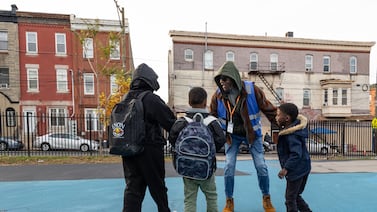When Pike Township opened a new child care center in 2019, it was expected to grow each year. But instead of expanding this fall, enrollment at the fledgling preschool fell by nearly 40% from last year to 130 children.
At the same time, the number of kindergartners in the Indianapolis district dipped by more than 20%.
Pike Township is not alone. As Indiana parents keep their children home because of the coronavirus and opt out of online learning, districts are reporting the largest enrollment drops among young children. About 10,000 fewer preschool and kindergarten students enrolled in Indiana schools this fall, a Chalkbeat analysis found. That 10% decline drove statewide enrollment losses compared with last year.
The trend could have significant repercussions for thousands of Hoosier children who are missing out on early education that experts say is crucial to developing the social and self-regulation skills to thrive in school. That could be particularly severe for students from low-income families and English language learners, who often benefit the most from early childhood education. Even Indiana’s youngest students could benefit from programs to help them rebound from the educational disruptions wrought by COVID.
If the missing students enroll next year, schools and parents will need to decide whether to hold them back a grade or to put them into kindergarten or first grade without the preparation they would normally receive. Educators will have classes with students at widely different levels. How prepared children are will depend not only on whether they missed school last year but also on the kind of experiences their parents are able to offer during the pandemic.
“My concern is that some students have better access to resources than others. And so it unevens the playing field,” Pike Superintendent Flora Reichanadter said.
In kindergarten, students are learning pre-reading skills. “If they enter first grade without those reading skills, they’re going to be behind,” she added. “Now, it doesn’t mean that we can’t catch them up, but they walked in with a disadvantage.”
Indiana doesn’t require children to attend school until they are 7 years old, so parents can keep their children out of school if they hesitate to send them in person during a pandemic, worry about putting them in front of a screen for hours, or cannot supervise virtual instruction.
The most important benefits children get from preschool and kindergarten are soft skills, like learning to listen to teachers and work with other students, many experts and educators say.
Research shows that when it comes to learning those skills, “the earlier the better,” said Chloe Gibbs, an economist at the University of Notre Dame who studies early childhood education. As a result, catching children up could prove difficult, she said. Communities, schools, and policymakers should try to help families as soon as possible, such as by connecting them with learning materials or parenting resources.
“Are there ways that we can try to supplement what’s going on in the home to recreate some of these things, so that it’s not a lost year?” Gibbs said. “We really should be thinking carefully about, what can we do to target resources and attention and time to the kids who need it most?”
Experts and advocates are touting programs to help students who have missed months of in-person instruction recover from the disruption. That includes support for ambitious ideas like tutoring corps or expanded summer school. The focus of those discussions is usually students who are already in school. But Gibbs argued those types of programs could also play a vital role in helping children who miss preschool and kindergarten.
One of the most important questions is which students are missing out on early childhood education, said Daphna Bassok, a professor at the University of Virginia who is studying preschool and kindergarten enrollment trends in Virginia during COVID. In Virginia, by far the largest decline in preschool participation is among students from low-income families.
That’s concerning because it suggests that delays in school enrollment could exacerbate inequality, she said.
“The implications really differ if what you’re doing instead of going to kindergarten is a really engaging thing,” Bassok said. “The type of experiences kids are having this year really, really range.”
Across the state, enrollment is down by about 1.6% for all grades combined. The bulk of the decline is in preschool and kindergarten. Kindergarten enrollment fell by about 5,700 students this year, down 7% from last year. More than 65% of districts have fewer kindergartners this year than in 2020.
Springs Valley Community Schools, an 800-student district in French Lick, has one of the highest rates of enrollment decline in Indiana. The elementary school, which offered in-person instruction until it was forced to go remote last week, enrolled 46 kindergartners this year, about 40% fewer than last year.
Because enrollment was so much lower than expected, one of the kindergarten teachers shifted to another grade, Superintendent Trevor Apple said. The three remaining kindergarten classes have about 15 students each — a few students less than in a typical year.
For now, the rural school district can withstand the financial hit that results from state funding cuts because of lower enrollment, Apple said. But he hopes that the dip is temporary due to the pandemic and that the district sees enrollment rebound next year, he said.
“I’m slightly concerned but I’m hoping that it just will bounce back,” Apple said. “I’m going to suspend my judgment until next fall.”
Enrollment declines in Indiana are steepest in preschool, which is optional and only offered at some districts. Declines could also be unusually large because many school systems, including Pike, charge families fees because the state does not provide the same funding as it does for K-12 education. Many private child care centers that are not affiliated with districts — and not included in state enrollment data — also offer preschool programs.
Preschool has been growing in Indiana in recent years, with more students enrolled in public school programs each year. This fall that trend reversed, and over 4,000 fewer students enrolled in district-run preschool, a drop of almost 20% from last year.
Pike will furlough one preschool teacher at the end of the semester and reduce hours for several assistants because preschool enrollment is lower than projected, according to the district. Kindergarten teachers are protected from furloughs or layoffs by their contract, Reichanadter said.
There is other evidence that preschool participation is down. Low-income families in Indiana are eligible for vouchers from On My Way Pre-K, a limited program that began in 2015. The vouchers pay for tuition at high-quality school-based and private preschools.
On My Way Pre-K scholarships plummeted this year. About 2,000 children participated in the program, down over 40% from 2019-20. In Marion County, participation fell by nearly 70% to about 350 children.
Declines in participation are particularly large in urban communities across the state, said Marni Lemons, a spokeswoman for Indiana Family and Social Services Administration.
“We believe this reflects families’ uncertainties related to the coronavirus and uncertainty relating to school being held in person or online,” Lemons said.
Gabrielle LaMarr LeMee contributed to this story.






